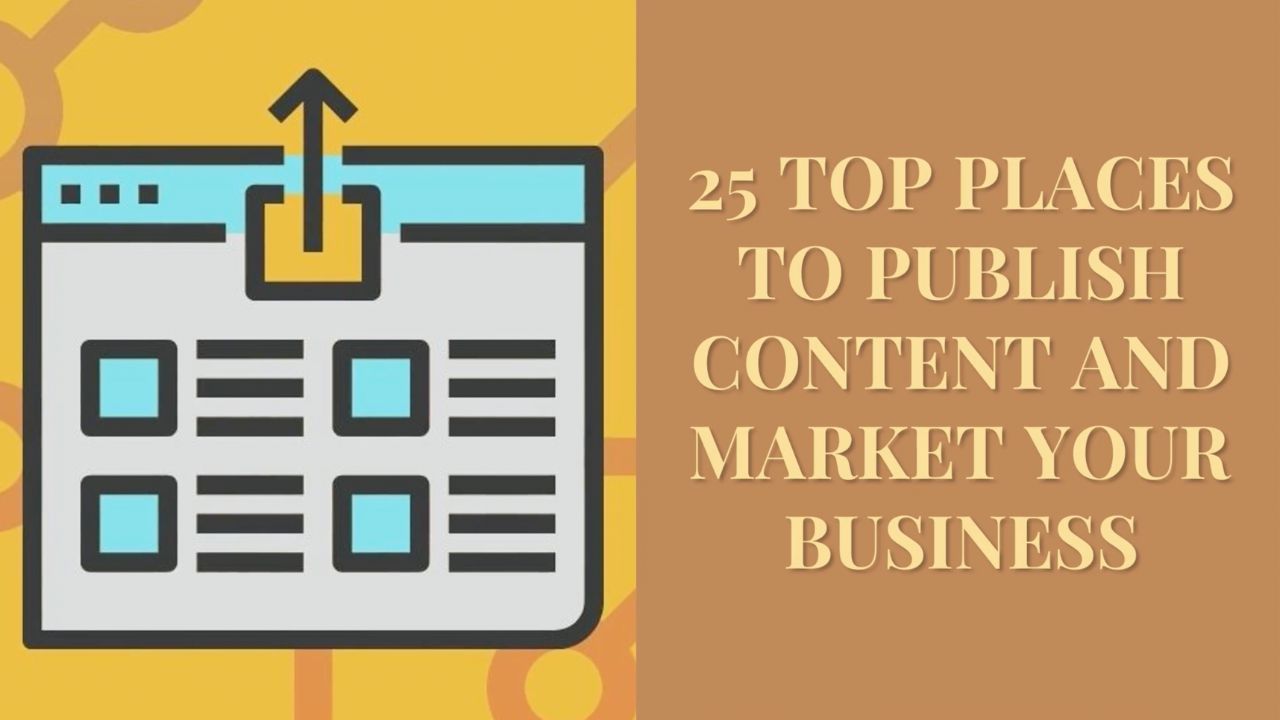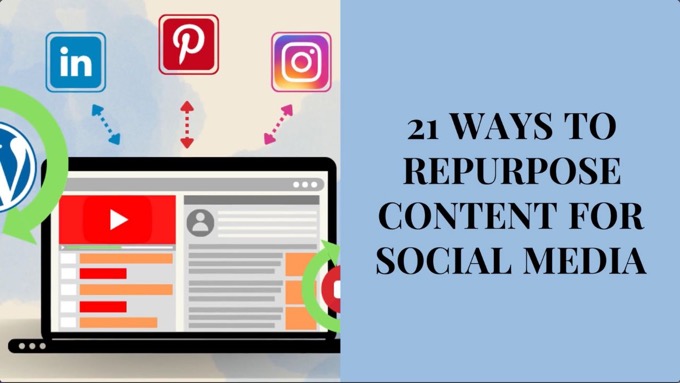One of the biggest mistakes businesses make with their content is to only publish it in a single place such as their website.
Minimal exposure, minimal visibility, minimal results.
If you're going to create content in the first place, to get the most bang for your buck, you've got to give it the widest audience and greatest exposure you can.
That means publishing and/or otherwise promoting it in as many channels as possible that are relevant for your business.
Those who insert themselves into as many channels as possible look set to capture the most value. They'll be the richest, the most successful, the most connected, capable and influential among us. We're all publishers now...
Pete Cashmore, Mashable founder and CEO

Often, this involves repurposing that content.
Yes, it's a bit more work to do...
But when systematized and done consistently using appropriate software the rewards are high.
It's also far easier than creating the initial seed content. The lion's share of the work has already been done, and you're just adapting it for a new environment.
Here are just a couple of repurposing possibilities for your original content:
- Use it as the basis as a guest post on a third-party blog that has your target market as their audience.
- Create a post for a Medium Publication, whether your own or one that someone else controls.
That's just two, both of which are covered more below... along with 23 other potential content channels.
Where Should You Publish? Unlock Your FREE Custom Guide to Optimal Content Publishing
Discover the best platforms to grow visibility and amplify your content's reach, based on your specific business and audience—it's 100% FREE!
Just hit the button now—it only takes a few seconds! →
Whether you're creating original content or repurposing it, note that not every place listed here will be suitable for your business—but you'll likely find many of them will be.
Some of them you may even be using already, though perhaps not as optimally as you could be.
Start by integrating just one additional content channel into your content creation activities.
Mastered that one? Add another.
For every channel that you add and publish to regularly and consistently, you'll find your results turn out to be worth far more than when publishing to a single channel in isolation.
In other words, a multi-channel content distribution strategy works out something like:

(Note: The following content channels are not listed in any kind of order of importance... except perhaps the first!).
25 Top Places to Publish Content
1. Your Blog
The first place to publish content for most businesses is on their blog.
Your business does have one, right?

A blog gives your website credibility and authority, attracts traffic, and provides you with content that, when distributed properly, generates additional traffic from multiple sources across the web.
The biggest issue most businesses have is that they're not publishing often enough, or consistently.
Publishing sporadically or once every X number of weeks will prove of little benefit.
Instead, aim to publish at least once a week.
In addition, I always recommend publishing a Featured Image for each post, such as the one you see at the top of this post.

This not only improves engagement on your blog and reduces your bounce rate—in other words, visitors hang around for longer, which encourages Google to send more—but the image can be reused when promoting and/or republishing your content elsewhere, not least on social.
2. Facebook
Whenever you publish something new to a channel like your blog, add an update to Facebook to help with overall exposure.
For a blog post, use some teaser text, such as the first paragraph or so, to encourage visitors back to your post.

Use an image from the content—such as the blog post's Featured Image—to maximize engagement and attract as many eyeballs as you can.
The easiest way is to have an image incorporated automatically via your social meta tags so make sure you have them set up correctly (here's how).
Organic reach on Facebook is now fairly limited, so try using paid promotion for greater exposure and track your results.
To maximize your return from a paid ad, do things like:
- Integrate opportunities for visitors to opt-in to your list.
- When sharing a link to your blog, use a Facebook Pixel so you can build an audience of your visitors and advertise to them in future (such as an opt-in offer).
Even if businesses do all of the above, most make the mistake of only doing it once. For example, they promote a new blog post on Facebook just one time and then forget about it.
Instead, auto-schedule repeat tasks so that the content is shared in different ways over time in order to maximize your results.
3. X
The same applies to X. Don't send out a single post pointing to your new content, and then just forget about it. After all, a single post is only going to be seen by a tiny fraction of your audience at any one time.

Yet this is exactly what most businesses on X do. If they've got new content, they'll post about it once, and that's it.
Instead, amplify your content by sending out multiple posts over time, such as once a week for twelve weeks.
Of course, it doesn't have to be the exact same posts, and probably shouldn't be. Each post can focus on a different angle, varying the hashtags used as needed.
As with Facebook, you'll be multiplying the results you would otherwise get.
And when doing so as part of a consistent process, the effects over time become even more significant.
Again, use paid promotion to give your posts further reach and expand your audience.
4. LinkedIn
LinkedIn is generally more applicable if you're B2B rather than B2C, unless you're trying to reach consumers who fit LinkedIn's demographic (which tends to be relatively affluent well-educated professionals).
As such, if LinkedIn's a good fit for your business, the quality of the traffic you can attract from the platform is pretty high.

So, in a similar way to Facebook, publish an update with a link to your new content alongside a teaser paragraph or two.
However, you're likely to achieve higher organic reach on LinkedIn if you include a link that keeps them on the platform, rather than directs users to an external website.
To do this, you can repurpose your content onto the LinkedIn Publishing Platform—more info below—and then link to that article instead (and do so in a way that still helps build your list or otherwise directs interested visitors to your own website).
You're likely to have both a personal profile on LinkedIn, as well as a Company Page.
So try for example publishing via the Company Page, and then sharing the update with your personal profile.
Or the other way around.
As with the other social platforms above:
- Use paid promotion to give your content more exposure—on LinkedIn, you can do this via a sponsored update capabilities.
- Implement a systemized, consistent process so your content is shared more than once.
- Grow your followers on LinkedIn to grow your reach (here's how)
5. LinkedIn Articles
Articles are really easy to add to LinkedIn, you simply need to click the Write article button from your LinkedIn feed.

As well as visibility within LinkedIn itself, articles on LinkedIn's Publishing Platform show up in Google's search results.
LinkedIn Publisher posts are also indexed by Google and show up in organic search results. To me, this is one of the best features of it. Your website will never have the same ability as a site like LinkedIn to rank at the top of the search results.
In terms of repurposing an existing blog post as a LinkedIn article, there are two main approaches you can use:
- Rewrite the article so it's sufficiently different from your existing post to have a separate result in Google Search—of course, this takes time to do, but is easy to outsource and ultimately gives you the best results in terms of increased visibility on Google as well as within LinkedIn.
- Publish a portion of your existing post as an article on LinkedIn, linking back to the full version—this is quicker and easier, but has fewer longer-term benefits.
For the former, you can of course still link back to the original post from within the article, as well as linking back to other posts.
In addition, generate leads by integrating opt-in opportunities such as an offer for a relevant lead magnet. Do this by just adding a link to a suitable opt-in page.
Where Should You Publish? Unlock Your FREE Custom Guide to Optimal Content Publishing
Discover the best platforms to grow visibility and amplify your content's reach, based on your specific business and audience—it's 100% FREE!
Just hit the button now—it only takes a few seconds! →
6. SlideShare
SlideShare was owned by LinkedIn, rising to become one of the top 200 most popular websites in the world with a massive fan base.
However, over time they let it slide (excuse the pun), and eventually sold it to Scribd in August 2020.
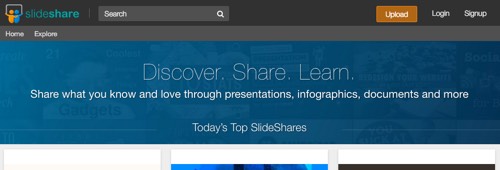
While at the time of writing it's too early to tell, it's likely that SlideShare will rise in prominence (and favored status amongst marketers) once again.
It should also be noted that despite reports of its untimely demise, it's still showing in the top 200 sites on Alexa (#187 right now).
... this “Quiet Giant” amongst social media networks has more opportunities for any internet marketer than all of Facebook, X, and LinkedIn combined.
Eugene Cheng, co-founder HighSpark
So it's certainly not a content channel to ignore, though is generally only applicable if your business is B2B.
Taking advantage of it is easy...
Simply upload a presentation created through say Powerpoint, Keynote or Google Presentations to SlideShare, and start attracting viewers of your presentation back to your own website and/or to opt-in offers.
For best results, make the creation of SlideShare presentations part of a regular, systematized process, each time you publish on say your blog so that your content is repurposed for the platform on a regular basis.
Once on SlideShare, your presentation can then also be:
- Embedded back on your blog, helping to reduce your bounce rate and thereby increase traffic to your site
- Used it as the basis of a video for YouTube—which I'll get to next—or private video hosting platforms like Vimeo
7. YouTube
YouTube, owned by Google, is in itself the world's second largest search engine, and the second most popular site in the world according to Alexa (Google comes in at #1, with Facebook further down the list behind various Chinese-language sites).
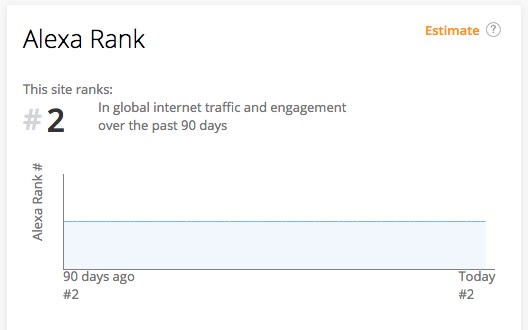
That means a presence here is all but essential, and a top priority in terms of repurposing content from your blog.
And of course once you have videos on YouTube, you can show up for these on Google Search, in addition to the original post.
Many businesses of course use videos as their primary content medium rather than a blog, potentially then repurposing videos into blog posts and other content.
But if your primary online content medium tends to be text-based, such as via a blog, how can you approach it?
One way, at least if you're in B2B, is as referred to above in the section on SlideShare. Once you have a SlideShare presentation, it's relatively straightforward to then convert that into video form, putting your own creative spin on it.
This could for example be a mixture of someone on-camera running through the presentation alongside shots of different slides within it.
Alternatively, someone could simply use the blog post as a guide while they talk to camera, running through the main points the post covers.

Or if you want a really quick and easy way, use a tool like Lumen5 to create a video from your blog post in just a few minutes.
Either way, the best results will come from committing to a regular process within your business to regularly publish videos to YouTube.
Ideally this will be via your own dedicated YouTube Channel through which you can grow your subscriber base, and thereby gradually increase the authority, ranking and popularity of your videos over time.
Don't forget to optimize your videos for the platform properly too.
Usage of the videos once created aren't just restricted to YouTube. For example, try uploading them also to Facebook, X, and LinkedIn, where they're likely to receive much higher levels of engagement than text-based content. In addition, videos can also be published on...
8. Vimeo
Vimeo is a higher-end platform offering hosting for videos (alongside other facilities) on a paid basis with:
- Over 1.5 million paid subscribers.
- Over 200 million registered users (source)
In other words, once you're regularly publishing videos on YouTube, you may well find Vimeo to be an additional and profitable channel for that content.
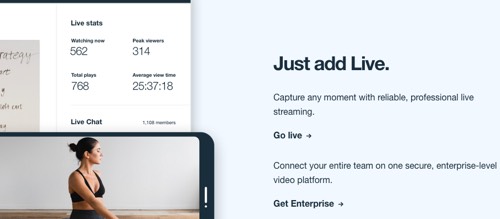
9. Medium
Medium has been gradually growing in prominence and popularity since it was launched in 2012 by Evan Williams, one of the co-founders of Twitter (now X). You can think of it is a blogging platform with the viral power of social media added on top.

While it doesn't publish user stats, user numbers are in the tens of millions, articles on the platform are often prominent in Google Search, and it provides an engaging experience for visitors.
One way to take advantage of the platform is by creating a Publication (think of it like an online magazine that carries your own branding) that you then regularly publish content to.

By doing so, over time you develop an audience who follow you (similar to subscribers for YouTube Channels), gradually improving your results over time as your content attracts increasing levels of engagement.
You can also submit posts to be published in third-party Publications with pre-existing, established audiences.
This may be preferable if you're just getting started on the platform, as you'll achieve much higher visibility with your content and attract more followers.
In terms of repurposing content for this platform, you can either:
- Republish your original blog post as-is, linking back to the original post. To ensure Google recognizes the source of the original content as your blog (sending you the majority of the traffic directly), it's best to do this once the original post is indexed.
- Rewrite the content for the platform—while it requires an additional time investment to do this in the short term, it does give you additional search visibility, and over time the additional traffic generated can be significant.
Either way, link back to your other blog posts (and content you may have on other platforms) from within the articles, as well as to opt-in offers such as a relevant lead magnet—optinopoli is ideal.
10. Flipboard
Flipboard is an easy one to start taking advantage of. You simply create a publisher account and submit the RSS feed for your blog (or other content channel).
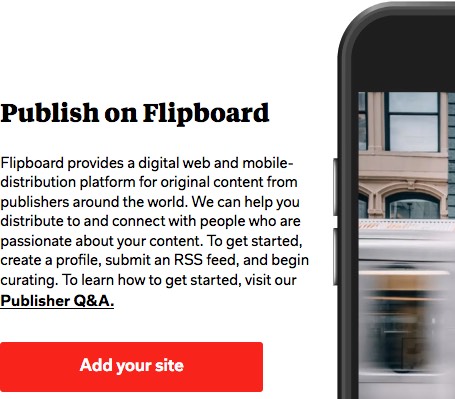
Subject to their review, and presuming you're publishing regularly and consistently, you'll start getting visitors referred from Flipboard to your content.
This isn't just for your blog. You can even do it with YouTube, your Medium Publication (info on getting your Medium RSS feed here), SlideShare account (see how here), or any other content channel with a suitable RSS feed.
In terms of size, Flipboard have more than 100 million monthly active users across 196 countries. According to Flipboard, their demographic can be summarized as:
...one-third Millennial, one-third Gen-X, and one-third Boomer, and is split pretty evenly between Male and Female. Our users are influential, curious, and affluent readers who invest in themselves by learning more about what they love.
Where Should You Publish? Unlock Your FREE Custom Guide to Optimal Content Publishing
Discover the best platforms to grow visibility and amplify your content's reach, based on your specific business and audience—it's 100% FREE!
Just hit the button now—it only takes a few seconds! →
11. Pinterest
Some stats about Pinterest may—and probably should—be of interest:
- They have a huge user base of 333 million monthly active users.
- It's one of the top 7 social media sites
- The majority of users come from high-income households, earn over $75,000 USD/year and are generally well-educated (source)
- They're buyers.

But to succeed on Pinterest, the value of your Pin is paramount, not how often you post.
12. Google Images
No, you can't go along and submit your image to Google Images. But they will spider your blog for example, finding and indexing images naturally. This of course increases your exposure to Google Search users, with even Image Search resulting in a flow of visitors back to your website.
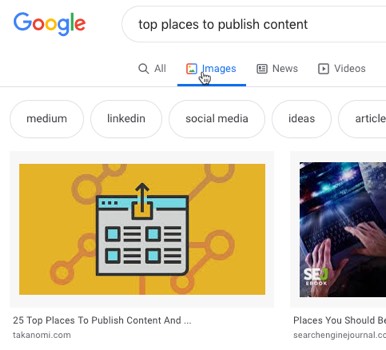
How do you take advantage?
Here are some ideas:
- Make sure you use a Featured Image each time you publish on your blog.
- Use appropriate keywords in image file names.
- Refer to your domain name in the image (such as through a logo) to encourage visitors to look you up even if they don't click through directly.
13. Your Email List
If it's traffic and exposure you're looking for—remember, keep in touch with your list!
The good news is that email newsletters are rising in popularity again. So create a regular email newsletter in which you let them know about new content you've published that's of value to them, and provide a link.
This helps build your relationship with your list, and keeps your business in the forefront of their minds (even if they don't open the email) while driving regular traffic back to your site for sales, referrals, backlinks, and more.
Of course, the more your list grows—by employing some of the other strategies listed here to get your content into new channels—the greater the effect this has over time.
One approach is to have an introductory note at the top of the email, and then publish some teaser text from the post along with a link.
Or you could choose to publish the whole article within the email itself, perhaps providing links back to other content within the article.
While there's no conclusive evidence, it doesn't seem too far fetched to believe that Google uses information from Gmail—such as links within emails—to help them understand what web pages are about and rank them accordingly.
In fact, it's hard to imagine that they wouldn't use such a rich source of information.
As your content grows, don't forget about your older content too. Readers may not have an immediate interest in your latest content, but something you published this time last year might be exactly what they need right now.
14. Guest Post on Other Blogs
Many blogs regularly publish content from guest contributors. If you're happy to put the groundwork in, it can be an excellent source of long-term traffic, provide exposure to whole new audiences and help build your authority.
Guest blogging can also help your SEO—here's how.
To start, set aside time to study multiple blogs whose audience consists of people who would have a potential interest in what you sell. Check to see if they regularly publish content from guest contributors, and see if they publish any information on guest posting and what their policy is.
You can also try contacting them directly, but bear in mind most blog owners tend to be inundated with such inquiries. However, it's also not that difficult to stand out, as most are relatively low quality and it's immediately obvious from the start that the person is emailing en masse. To increase your chances that your email will at least get read, here are some initial tips:
- Personalize it as much as possible, and make it as clear as you can that you have at least done your research—for example, reference a recent post via the subject line or first line of the email, get the name of the blog right, and make sure you address the correct person by name.
- Avoid the 'I love your blog and have been following it for months' line or similar—it's a template-type email that everyone seems to write, and it comes across as insincere.
- Follow up—if your initial email doesn't get a reply, follow up after a few days, and then do so again. This shows that you're at least putting the effort in, and are sincere about writing for the blog in question.
- Make sure the blog publishes content similar to the kind you intend to write, and include some links to your previous content.
- Start with lesser known blogs first. As your portfolio builds, so will the likelihood of a positive response from more popular blogs.
15. Printed Newsletters / Magazines
Don't forget the offline world! There are valuable opportunities there too, with a whole myriad of printed newsletters and magazines in niches and sub-niches, many of which won't ever even appear on retail shelves.
For example, for several years, I had a regular column in a couple of printed newsletters that went out to hundreds of paying subscribers, published by small info-marketing businesses. Both opportunities came about through a combination of networking, and building up my credibility over time through regularly and consistently publishing content.
Many such publishers are regularly looking for suitable contributors, as it makes the job of creating the content for a printed newsletter easier while providing additional value to their customers. So don't be afraid to reach out to potential publishers, build up a relationship, and see what the possibilities might be to add value to their publications.
Depending on your niche, you may even find opportunities via Google—for example, try searching newsletter submit article [your niche].
Where Should You Publish? Unlock Your FREE Custom Guide to Optimal Content Publishing
Discover the best platforms to grow visibility and amplify your content's reach, based on your specific business and audience—it's 100% FREE!
Just hit the button now—it only takes a few seconds! →
16. Mix.com
Whatever happened to StumbleUpon? In 2018, it transitioned into Mix.com, a "new place to discover, save and share all your favorite things on the internet".

How can you publish content to it? After creating an account, you can create collections in which you can essentially "collect" content you find online into specific interest or topic areas. These collections are then shared with your network, and are made discoverable to other Mix users with similar interests.
You can do this via your phone, via an extension for Chrome, or via the Mix desktop.
For best results, don't solely save your own content to a collection, but include your content in the mix (aha!) with other content you like that you come across online.
17. Forums
Of course, there are hundreds of forums available across a wide range of topic areas. Findaforum.net is a great place to find one suitable for your niche, or simply search on Google.

How should you approach it?
Start by building up your participation in the forum, such as by answering people's questions where you're able to add value. Most will allow you to link back to your website via your profile and/or a signature area.
Avoid being sales-y and instead simply aim to add value. Depending on the forum, it may be possible to add a link to your signature pointing to an opt-in page for a relevant lead magnet. However, be sure to follow the forum's rules and guidelines or you could find your access revoked.
You may even be able to add longer content pieces such as an article that's been repurposed from your blog—or the first few paragraphs from one and then linking back to the original—posting it as a useful resource to help people.
18. Amazon
Once you're publishing content regularly and consistently, such content can be periodically repurposed into ebooks or printed books that can then be sold (or given away for free) on Amazon.
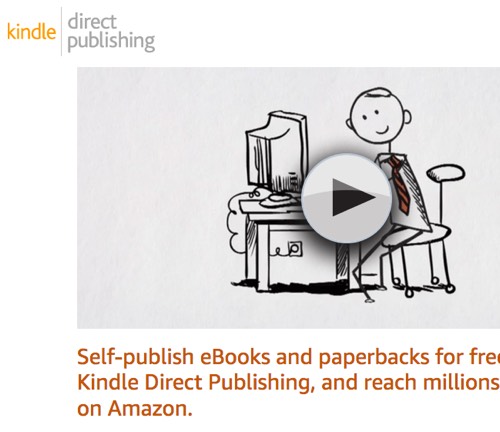
Amazon is of course a high traffic, high authority website, and its visitors are buyers. Amazon has sold up to 90 million Kindles, and that's not including people reading Kindle content via apps.
So by regularly repurposing content for Amazon's platform as part of your content marketing workflow, you're able to tap into and take advantage of their huge customer base to build exposure for your own business.
19. Instagram
Instagram is second only to Facebook for daily usage, and reached the 1 billion monthly active user mark in June 2018.
Engagement levels on the platform are much higher than Facebook, hence its popularity amongst marketers. Even better, as this graph from Yotpo shows, this engagement continues when visitors arrive on your website, with more engagement than visitors from any other social channel.
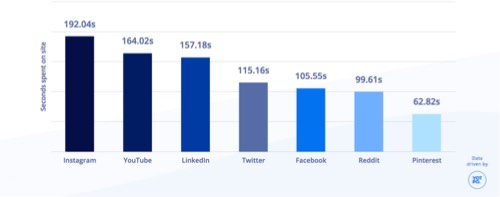
Tailwind has some great tips for promoting your blog posts on Instagram, and see this post for info on how hashtags work on the platform.
20. Podcast
Podcasts continue to grow in popularity:
- 50% of all US homes are now podcast fans
- 24% listen to podcasts weekly
And it doesn't look like it's going to be stopping any time soon:
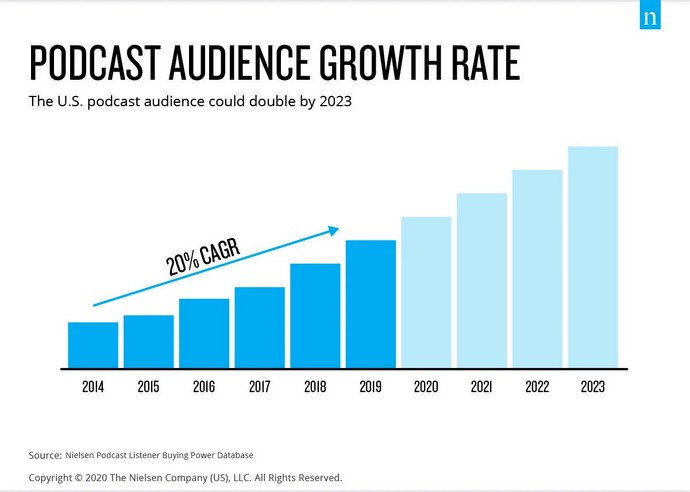
It's potentially straightforward to repurpose content from other forms into a podcast—such as by using the audio of a YouTube video or Facebook Live—and start taking advantage of the medium.
As with YouTube videos, some businesses use their podcast as their primary content medium, repurposing podcast episodes into blog posts and other content.
Pat Flynn, one of the most prominent podcasters, shares this tutorial on how to start a podcast based on his decade-long experience.
Where Should You Publish? Unlock Your FREE Custom Guide to Optimal Content Publishing
Discover the best platforms to grow visibility and amplify your content's reach, based on your specific business and audience—it's 100% FREE!
Just hit the button now—it only takes a few seconds! →
21. Reddit
Reddit has as many users as X—330 million.
However, it's not a case of just jumping on there and sharing your content. You need to develop some history first by contributing to the community and collecting karma (generated when people upvote your comments).
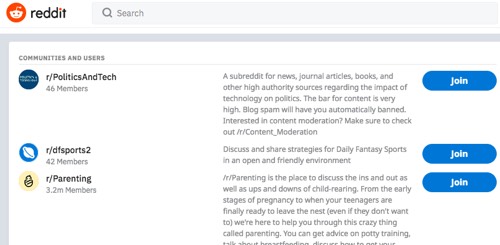
Subreddits are the individual communities within Reddit that focus on particular topic areas, and most permit links only once you've reached a particular karma score (and thereby proved your worth). They also have other posting rules, so be sure to follow them to avoid being blocked.
As with forums (see 17 above), your primary focus should be to add value to the discussion. Once you've got enough karma to be able to share links, be careful not to overdo it with your own content, ensuring you also share other people's too. Most people generally advise for an 80/20 mix, with just 20% of the links you share pointing to your own content.
22. Tumblr
Tumblr, currently owned by Automattic (think WordPress), is a social networking site and microblogging platform, and one of the top 25 websites in the US, and the 51st most popular worldwide. Around 70% of users are aged between 18 and 35.
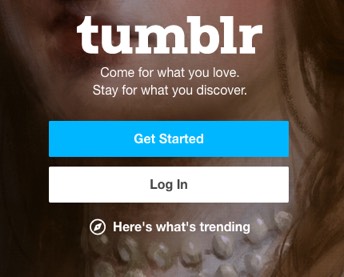
Try using it in combination with your blog by publishing excerpts and pictures from your post on Tumblr, linking back to the full post. In other words, it's not much different to any other social network.
23. Google Search
Why include Google Search on a list like this? It is of course one of the main places you want your content to show up (as stated at the beginning, this list is not in any order of priority).
While control over your ranking is limited, influence over your ranking isn't.
The more you build your authority by publishing content around the web such as on the platforms listed here, the higher your content will generally be ranked.

Of course, SEO is a huge topic, but the main things to remember to rank well are:
- Provide as much value as you can to the visitor.
- Ensure they have a positive and engaging experience on your website.
- Use keywords and backlinks appropriately to help Google understand what a piece of content is about.
- Publish regularly and consistently.
- Encourage the sharing of your content on social media, including sharing it regularly yourself through your own channels.
24. Quora
Quora is one of the most popular question-and-answer websites. You attract targeted traffic back to your website by simply answering questions and sharing your expertise.
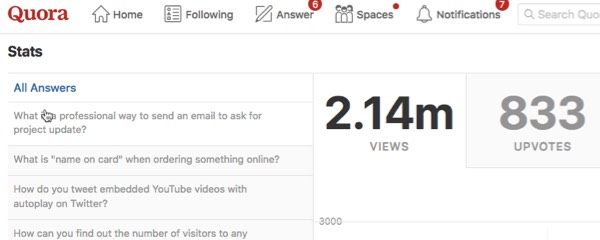
The platform is one of the top few hundred websites in the United States, and its question-and-answer pages are regularly ranked on the first page of Google.
To use it, simply answer relevant questions in a way that offers genuine value to Quora users.
For example, repurpose a recent blog post by sharing relevant key points, rephrasing them to directly answer the question.
Link back to the post for more information.
However, constantly linking back to the same domain can raise a red flag on Quora and you may find yourself banned or temporarily suspended.
So mix it up a bit by:
- Answering some questions without linking back at all. Provide value, and you'll find people viewing your profile and visiting your website anyway to find out some more. Include your domain name in your profile, so people can find you easily.
- Link back to your content on other domains, such as some of the other places to publish content listed here.
To boost visibility of your answers:
- Include one or more relevant images in your answers to boost engagement.
- Be as helpful as possible in answering the question directly.
- Avoid coming across as self-promotional.
25. Infographic curation websites
Why not convert that blog post, video tutorial or podcast episode into an infographic, one of the most engaging types of images on social media and elsewhere?
Infographics offer a quick and easy way for people to absorb the main information in your content, with most of us processing visuals 60,000x faster than text (Hubspot).
Find someone to create an engaging infographic for you on sites like Fiverr, Freelancer and Guru.com.
Or find out how to create infographics online using one of the amazing software tools that now exist to do just that.
Once created, as well as sharing on social media and incorporating back into your blog post, there are multiple websites you can then submit that infographic to and gain some useful backlinks and additional traffic:
Frequently Asked Questions
How can repurposing content help with exposure?
Repurposing content allows you to reach a wider audience by adapting your original content for different channels and platforms.
Why is it important to publish content in multiple places?
Publishing content in multiple places increases visibility, drives more traffic, and helps engage audiences who may not visit your main platform.
What are some effective ways to promote blog content on social media platforms?
Use teaser text, add visuals like images or infographics, run paid promotions, and schedule repeat posts to maximize reach and engagement.
How can guest posting on other blogs benefit a business?
Guest posting on other blogs can boost visibility, attract new audiences, build authority, and improve SEO by generating backlinks from reputable sites.
What is the best platform to publish content for maximum visibility?
The best platform depends on your audience, but LinkedIn, YouTube, and Medium offer strong visibility due to high traffic and discovery features.
Where Should You Publish? Unlock Your FREE Custom Guide to Optimal Content Publishing
Discover the best platforms to grow visibility and amplify your content's reach, based on your specific business and audience—it's 100% FREE!
Just hit the button now—it only takes a few seconds! →
To Conclude
It's unlikely you're going to want to—or be able to—publish content to every site on this list.
But it does give you a wide range of possibilities to maximize your exposure, visibility and results by getting your content into as many channels as possible, including by repurposing that content.
It's vital to do so consistently and systematically, because that's how audiences and meaningful results stack up—use appropriate software designed to make it easy.
